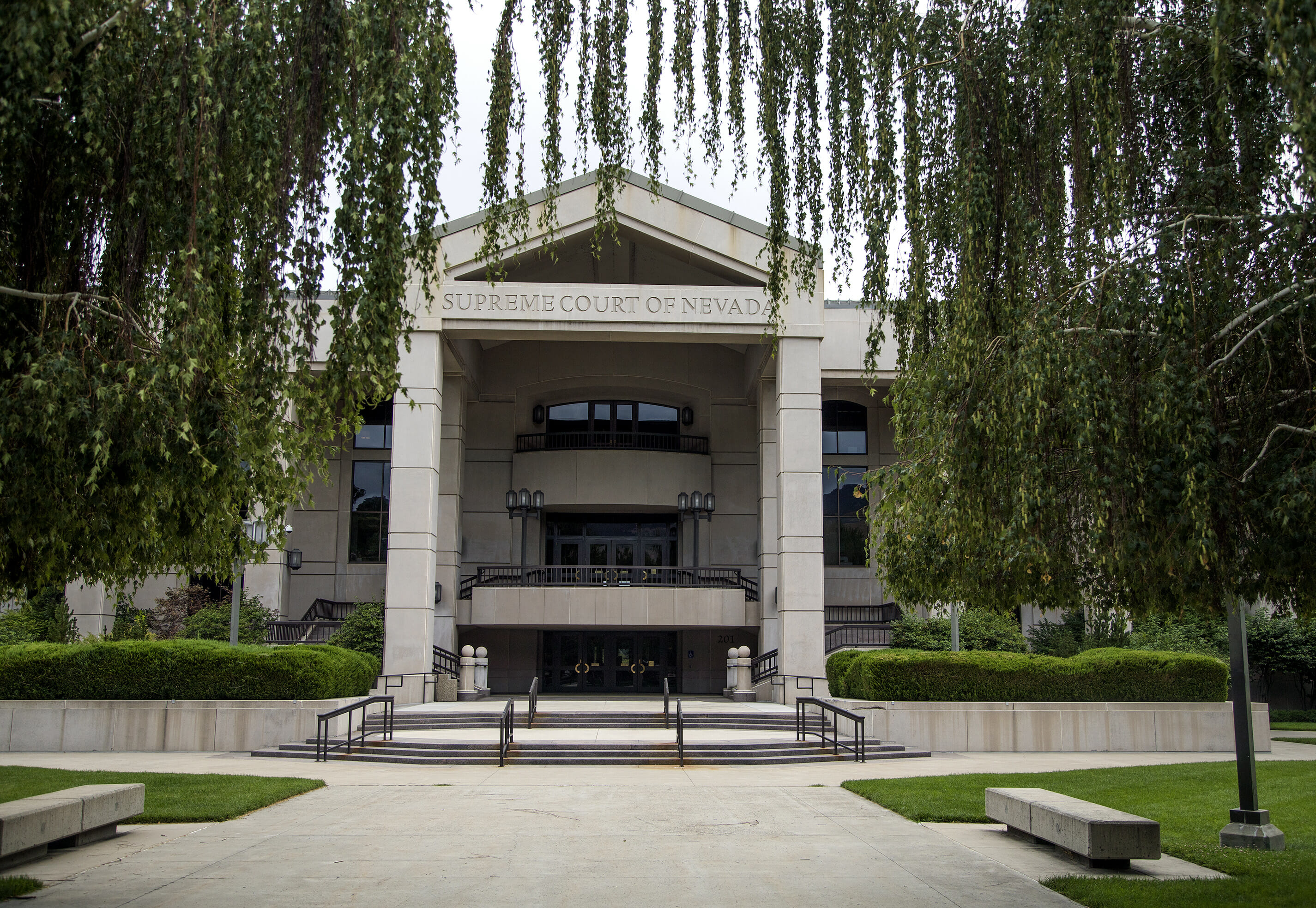Indy Explains: How a little-noticed tweak means Nevada Supreme Court won't reduce number of justices

Thanks to a little-noticed tweak in 2015, Nevada’s highest court will continue to have seven elected justices and not be reduced to five at the end of 2019.
Though few picked up on it at the time, a small section of a 35-page budget bill introduced and approved in the waning days of the 2015 Legislature repealed a 1997 law requiring the court to eliminate two of the court’s seven justices at the end of their term if a statewide court of appeals was approved by the voters in the state.
Though several media outlets picked up on the required reduction in 2015, the repeal of the 1997 measure has received comparatively little attention in the more than two years since lawmakers approved the change.
But the repeal is having an impact — rather than eliminating the seats of Justices Lidia Stiglich and Michael Douglas at the end of their terms, voters will get the chance to cast votes to fill three of the court’s seven seats during the 2018 election.
In 1997, lawmakers approved a bill that would increase the number of justices from five to seven, but included a provision requiring the court to eliminate the two most recently created seats at the end of their term if voters approved creation of a statewide court of appeals.
That finally happened in 2014, when Nevadans approved a constitutional amendment creating a 3-member appellate court on a 54 to 46 percent margin, after previous ballot questions in 1972, 1980, 1992 and 2010 fell short. Nevada’s top court operates on a “push-down” model, meaning all appealed district court decisions go first to the Supreme Court which has the discretion to either take up the case or refer it to the appellate court.
Though supported by the court, approval of the ballot question left judges at the mercy of state lawmakers to either leave the law in place or make a change ahead of the 2017 legislative session, after which two positions on court would be eliminated.
In an interview, Chief Justice Michael Douglas said that the court didn’t request a bill or overtly tell lawmakers to make the change during the 2015 session, but that the Legislature did it anyway through inclusion in SB514, the primary governmental appropriations bill introduced just days before the end of the 120-day session.
Douglas said that lawmakers recognized that having seven members on the court was working, and that reducing the size of the court wouldn’t help reduce the high court’s backlog of cases.
“From my standpoint, to be truthful, a seven-member court is more beneficial,” he said. “It’s easier to convince four others in a five member court than six in a seven member court, so you get the benefit of more thought.”
Neither the Senate Finance committee nor the Assembly Ways and Means committee (the legislative bodies charged with reviewing the state’s two-year budget) appeared to have members who directly commented on the repeal during their meetings reviewing the budget bill, though legislative staff noted inclusion of the repeal during their presentations on the bill.
Republican state Sen. Ben Kieckhefer, who chaired the budget committee in 2015, said he had a “fuzzy memory” of including that provision in the budget bill, but that it wasn’t uncommon for lawmakers to include policy changes in budget bills. He said that he didn’t recall any serious opposition to repealing the 1997 law, and that doing so would seem to essentially offset creation of the appeals court.
“Reducing the number of justices, you’re working the opposite way,” he said.
Under a 1997 change in law, state supreme court justices are allowed to hear and decide cases in panels of three (the full court hears a case if two of the three judges request it). Removing two justices from the court would essentially leave the court where it was before creation of the appellate court, with only one three judge panel and the three-member “panel” of Court of Appeals justices.
Douglas said that the higher number of justices also gives those in rural areas or from nontraditional backgrounds a greater chance at joining the court.
“The fewer justices, the tougher it is for individuals from small communities to be elected,” he said.
According to the court’s 2017 report, the state Supreme Court had a backlog of 1,754 pending cases at the close of the 2017 fiscal year. That number had increased more than 15 percent from 2016, due to an increase in filings and decrease in dispositions from the previous year.
Including the 206 pending cases before the state Court of Appeals, the two courts had 1,960 pending cases backlogged by the end of the 2017 fiscal year, close to the high of 1,985 backlogged cases in the 2014 fiscal year.
Douglas said that the initial three-judge court of appeals would probably need to be increased sometime in the near future. Nevada, as one of 41 states with intermediate appellate courts, ties Alaska and North Dakota as the states with the fewest number of appellate court justices at three.
State Supreme Court justices are elected to six-year terms with no term limits, and run in nonpartisan races.
